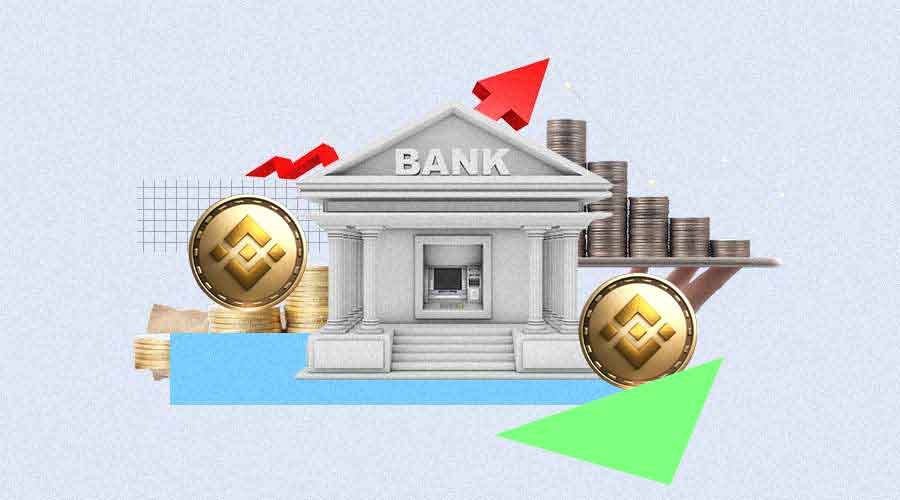 How is traditional Banking being challenged by the advent of cryptocurrencies?
How is traditional Banking being challenged by the advent of cryptocurrencies?
Traditional banks are hesitant to accept the use of these digital assets despite the fact that the cryptocurrency industry is rapidly growing and gaining popularity because they think that the dangers involved outweigh the potential rewards. Regulating bodies like the Office of the Comptroller of the Currency (OCC), who believe that these assets might propel financial institutions into a new era of innovation and efficiency, are trying to alter banks’ perceptions of digital currencies. A number of interpretative letters explaining how conventional financial institutions might engage in transactions (or develop services) utilizing digital currencies have recently been released by the OCC. The OCC is making this effort in the hopes that better regulatory guidance would make banks more at ease dealing with these digital assets. National banks and federal savings organizations can now use public blockchains and stablecoins to conduct payment activities, according to a January 1 announcement from the OCC. This makes it possible for banks to handle payments considerably more quickly and independently from third parties. This clarification letter effectively places blockchain networks in the same classification as SWIFT, ACH, and FedWire, opening the door for these networks to be a part of the wider financial ecosystem. Banks may be leery of bitcoin because they believe that dealings with these assets carry a higher risk and necessitate time-consuming and expensive due diligence. But if financial institutions are willing to make the switch, digital currencies may benefit both them and their clients in a number of ways.
In a research by the Royal United Services Institute and the Association of Certified Anti-Money Laundering Specialists (ACAMS), roughly 63% of respondents who work in the banking sector said they see cryptocurrencies as a risk rather than an opportunity. and the following are their main worries:
- Cryptocurrency assets were developed as a replacement for traditional banking infrastructure since they don’t require a middleman and aren’t dependent on the capabilities of a centralized bank, government, or organization. The blockchain code and the distributed nature of the blockchain are trusted in these transactions rather than depending on centralized middlemen. Some people think that central banks won’t be necessary any longer or won’t be able to regulate the money supply because of how decentralized the currency is seen to be.
- Over the course of their brief existence, the price of cryptocurrencies has usually fluctuated, particularly that of bitcoin. This is due to a variety of factors, including market size, liquidity, and market participant numbers. Because the price hasn’t been consistent historically, banks view this as a risk because they think the currency could cease to be a reliable investment over time.
- With the use of cryptocurrencies, peer-to-peer transactions may be carried out without the need for a regulated middleman, enabling users to send money fast and conveniently without having to pay transaction fees. Transactions are simply connected to the transaction ID on the blockchain rather than being associated with a specific bank account through a financial institution. Many banks are concerned about the lack of anti-money laundering (AML) and know your customer (KYC) laws around transactions with digital currency, which is why this kind of pseudonymity disturbs them. Banks frequently believe that it is impossible to follow bitcoin transactions for AML and KYC purposes, which might result in fraud and illicit activities on the network.
Banks must find a way to embrace this technology and view it as a friend rather than an adversary if they want to avoid falling behind. Adoption of cryptocurrencies might expedite, improve, and modernize financial services, and several recent sector improvements can allay banks’ fears about the risks and enable them to see the potential advantages instead. By creating tools that would make it easier for their clients to embrace cryptocurrencies, banks may aid in attracting new, less seasoned individual investors to the market. Banks could provide interest-bearing cryptocurrency accounts that allow consumers to invest their cryptocurrency through other financial instruments or on the back end. By serving as a guide for investors who aren’t familiar with the subtleties of cryptocurrency, banks might reduce some of their stress.Banks can assist bitcoin owners in easing their security worries. Many holders are concerned about the hacking of personal wallets and exchanges. Established institutions might aid in protecting digital currency from theft or hackers, relieving customers’ concerns. By placing bitcoin under bank regulation, criminal activities may be reduced as well as the perception among outsiders that cryptocurrency transactions are not safe. Because computer code rather than a person’s actions determines whether a smart contract is successful, less trust between the parties is required when entering into an agreement through one. Banks may increase that confidence by using these smart contracts as a trustworthy third party in mortgages, business loans, letters of credit, and other transactions.
Financial institutions should stop viewing cryptocurrency as a rival and start viewing it as a partner. In fact, banks may have a big impact on the cryptocurrency market by bringing much-needed stability and certainty to the mostly unregulated environment. By embracing cryptocurrencies and blockchain technology as a whole, banks can go to the next level of efficiency and creativity.




